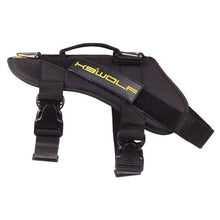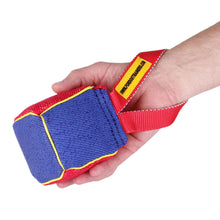First Signs Of Hip Dysplasia And What You Need To Do

One health condition that all German shepherd owners need to be aware of is hip dysplasia. Some German shepherds are genetically prone to this crippling condition, however, it is possible for all breeds of dogs to be effected.
Both small and large dogs can suffer from hip dysplasia, despite it being more common in large or giant breeds such as German shepherds, Labrador Retrievers, Saint Bernards, and Great Danes.
Responsible breeders won’t breed dogs with canine hip dysplasia (CHD) and some will perform genetic tests on their dogs to reduce the genetic risk. However, there are additional factors at play that increase the odds of dogs genetically predisposed to developing CHD.
Along with genetics, nutrition, excessive growth, some types of exercise, and being overweight can all contribute to a dog developing hip dysplasia, which can show up in dogs as young as four months old.

What is canine hip dysplasia (CHD)?
According to the American College of Veterinary Surgeons, CHD is:
“a condition that begins in dogs as they grow and results in instability or a loose fit (laxity) of the hip joint. The hip joint laxity is responsible for potential clinical signs (symptoms) of hip pain and limb dysfunction and progressive joint changes.”
“The hip joint is a ball and socket joint and continual abnormal movement of the femoral head (ball) deforms the acetabulum (socket). The long-term response to this joint laxity is the progressive loss of cartilage, the development of scar tissue around the joint, and the formation of osteophytes (bone spurs) around the ball and socket.”
What are the symptoms of Canine Hip Dysplasia?
Every German shepherd owner should be aware of the signs and symptoms of CHD so they can get appropriate care for their pet as soon as possible. The symptoms of CHD include:
- Hip pain
- Limping
- Lameness
- Stiffness
- Reluctance to stand, run, or jump
- Difficulty climbing stairs
- Shifting weight to the front legs
- Atrophy, loss of muscle in the thighs
- Swaying, unsteady gait
- Bunny hopping on back legs
- Decreased range of motion
- Decreased activity
- Increased shoulder strength to compensate for weak back end

How is canine hip dysplasia diagnosed?
Along with symptoms and a physical exam, there are three types of diagnostic tests that can accurately diagnose CHD, including two types of x-rays that can predict whether a puppy will develop the condition. They are:
- The most accurate x-ray method at an early age is the PennHIP distraction method. This method measures the actual amount of hip laxity. It can predict whether a puppy will develop CHD and determine what surgical options are available to prevent crippling arthritis.
- The Ortolani Sign or palpation method has been used to diagnose young puppies since 1985. The test is performed under light sedation and can confirm if a puppy will have CHD by one year of age. Many primary care veterinarians can perform this exam at 10–16 weeks.
- The third type of OFA x-ray exam most used by breeders cannot predict if a young puppy will develop CHD and is performed on dogs at age 1 and 2 years of age, which can be too late to prevent arthritis from developing.

What can you do for Canine Hip Dysplasia?
Canine hip dysplasia can range from mild to severe. Depending upon how severe your dog’s condition will determine what steps you can take to help prevent future pain, disability, and arthritis. Another factor is your dog’s current medical conditions and any financial limitations you may have.
Prevention:
There are things you can do to try to prevent hip dysplasia from developing in your pet, including:
- Feed a large breed puppy food for 18 – 24 months, or as suggested by your vet
- Maintain a healthy weight
- Low impact exercise until fully grown
- Reducing jumping, etc in young dogs
Non-Surgical Treatment
If your dog has hip dysplasia and surgery is not an option, here are some suggestions:
- Reduce weight, if needed
- Modify diet with your vet
- Exercise modification, such as low impact or controlled walks only
- Supplements such as glucosamine and chondroitin
- Physical therapy
- Acupuncture
- Massage
- Cold laser therapy
- Adequan injections
- Chiropractic care
- Medications for inflammation and pain
- Provide scatter rugs on hard floors
- Provide dog beds and pads for comfort
- Provide ramps or stairs for getting into cars, on furniture, beds, etc

Surgical interventions for Hip Dysplasia:
If your vet has recommended surgery as an option to treat your dog’s hip dysplasia to prevent future damage and disability, there are several options that may be recommended. These include:
- Juvenile Pubic Symphysiodesis (JPS) surgery along with diet and exercise modification, for puppies 10 to 18 weeks old.
- Double or Triple Pelvic Osteotomy (DPO/TPO) surgery for puppies under 8 to 10 months old.
- Total Hip Replacement (THR) surgery, can also be used in young dogs that can’t have JPS or DPO/TPO.
- Femoral head ostectomy (FHO) surgery, for any age relatively inactive dog weighting under 70 pounds.
The best thing you can do for your dog is follow the advice of your vet. Some dogs are able to live with mild hip dysplasia while other cases are very severe. If you suspect your pet has hip dysplasia, act fast to try to prevent damage in the joint, which can cause painful arthritis.

We hope you found this article informative. Please feel free to share it to help another pet lover.
You may also like: How To Prevent Joint Injuries In Your German Shepherd
























